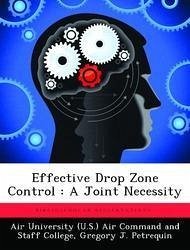Current drop zone control doctrine and guidance is inadequate for the warfighter. While current regulations direct procedure, they do not cover the tactics and techniques or the "art" of drop zone control. This has resulted in a deficiency of knowledge among the chief players in the airdrop game, the aircrews and the ground party that supports them. In addition, much of the current guidance is not practical for the battlefield. It is printed in large, heavy manuals that prevent the soldier from taking it with him to the battlefield. This will cause him to rely on notes or memory, degrading his capabilities. Aircrews have certain expectations about the support they should expect on the drop zone but they are not always realized. The bottom line is that aircrews and ground parties need to have interoperability and be working off the same sheet of music.The first steps in making this happen is to produce a definitive guidance that addresses procedures; tactics and techniques for drop zone control. This guidance must then be issued to aircrew after completing airdrop training, and ground party members after completing drop zone control training. It must be multiservice oriented, so it is applicable across the board. Next, it must be portable. This means it must not be the size of a telephone directory. It should be able to be reduced to a five by seven-inch document that the aircrew can fit in their publication bag and the ground party can keep in their battle dress uniform pocket. This way, they will take it to the battlefield with them and have the information readily available.This research paper covers the historical and contemporary reasons for improved efficiency in drop zone control, suggests the Air, Land and Sea Application (ALSA) Center as the proponent of this new, multiservice document and provides a general outline and suggested content for it.
Hinweis: Dieser Artikel kann nur an eine deutsche Lieferadresse ausgeliefert werden.
Hinweis: Dieser Artikel kann nur an eine deutsche Lieferadresse ausgeliefert werden.








